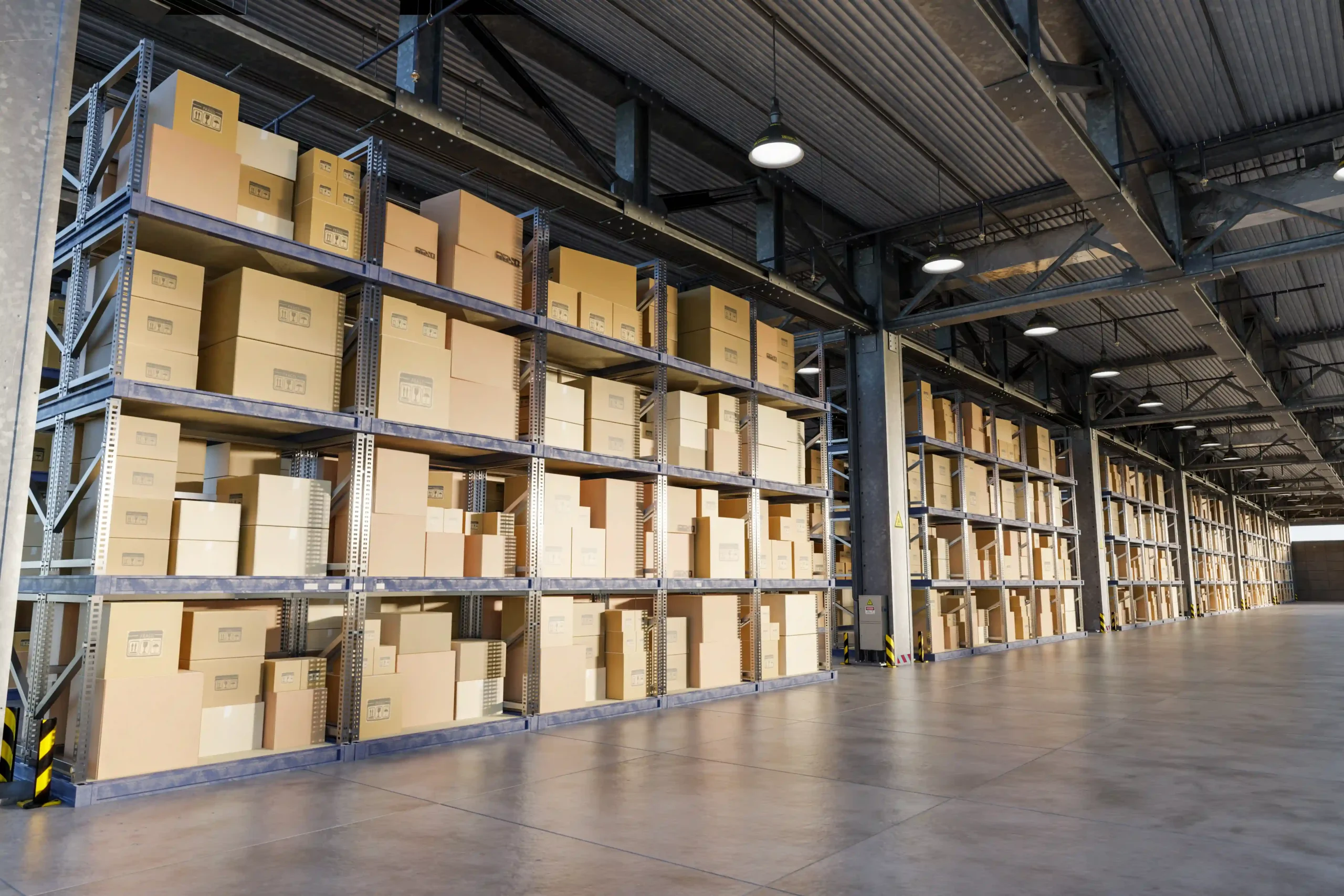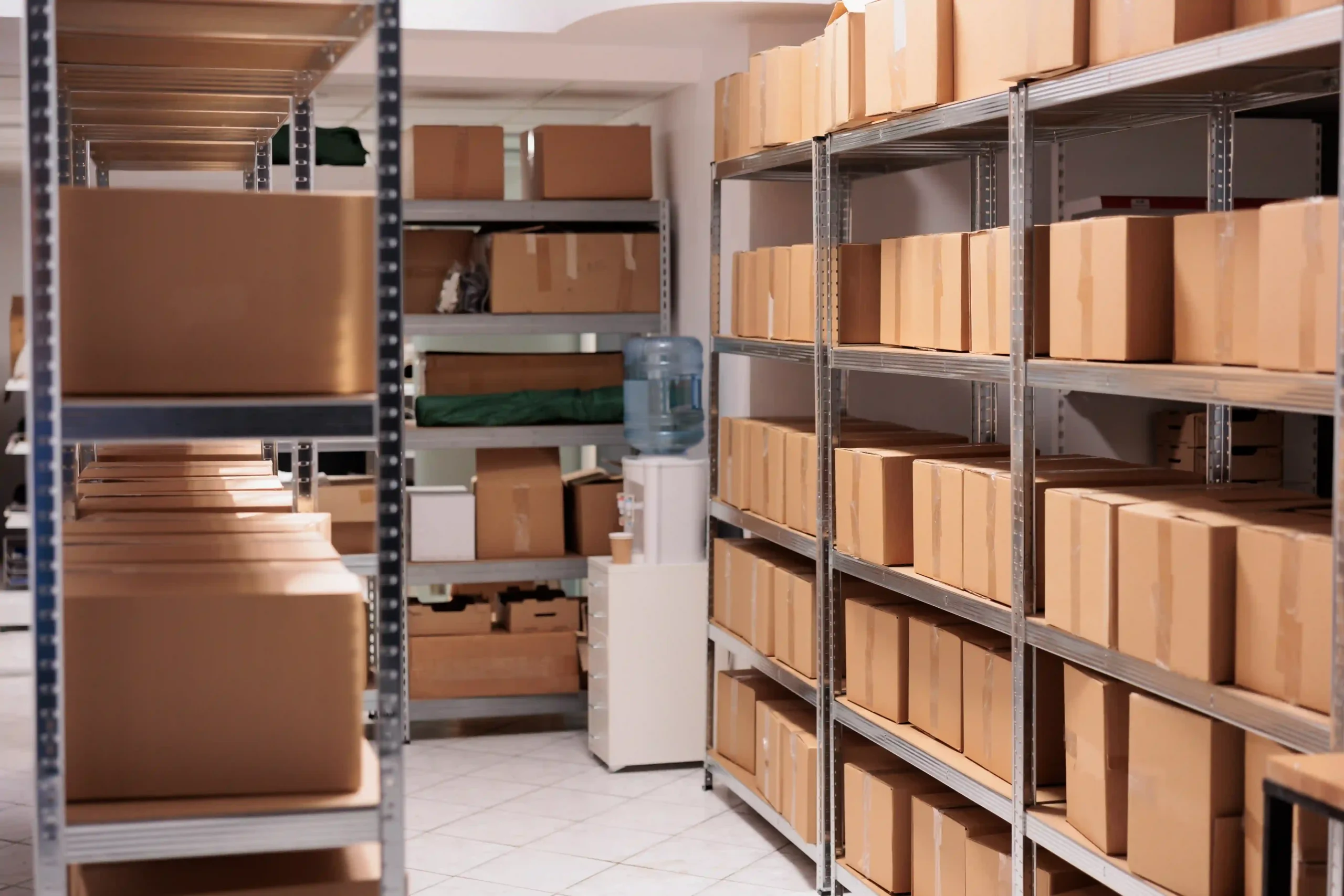Small warehouse storage solutions refer to strategic methods and systems used to optimize storage capacity, efficiency, and accessibility in limited warehouse spaces. Businesses with compact warehouses need to maximize every inch of space while ensuring smooth operations.
These solutions include vertical storage racks, inventory slotting techniques, automation, and lean inventory management to keep warehouses organized, cost-efficient, and ready for growth. At Tri-Link FTZ, we’ve been helping companies streamline their warehousing operations for over 35 years.
Managing inventory in a Foreign Trade Zone (FTZ) comes with unique challenges, especially when space is limited. The key to success?
Optimizing layout, using smart storage solutions, and integrating technology to maximize every square foot.

Over the years, I’ve seen businesses struggle with the same storage challenges. A small warehouse can quickly become overcrowded if not managed properly.
Many companies fall into the trap of overstocking inventory, leading to congestion, inefficient workflows, and safety hazards. When space is limited, poor organization leads to wasted time and resources.
Another issue is the lack of vertical storage utilization. Many businesses focus on floor space but overlook the potential of vertical shelving and mezzanines.
Storing inventory at higher levels can double or even triple storage capacity without expanding the warehouse footprint. Additionally, inefficient picking and packing processes can lead to increased labor costs, as workers spend more time searching for items instead of fulfilling orders.
Perhaps the most overlooked challenge is inventory mismanagement. Without a proper inventory tracking system, businesses struggle with overstocking, misplaced items, and excess holding costs.
We’ve helped clients implement barcode scanning, warehouse management systems (WMS), and lean inventory principles to combat these inefficiencies.
One of the first steps to solving storage issues is optimizing warehouse layout. A small warehouse should be designed to ensure smooth workflow, easy navigation, and maximum storage density.
At Tri-Link FTZ, we recommend maintaining warehouse capacity at 80-85% utilization. Going beyond this limit can lead to a cramped, inefficient workspace, slowing down order fulfillment and increasing error rates.
To maximize floor space, we focus on inventory slotting strategies. This means positioning high-demand SKUs in easily accessible locations while placing slower-moving inventory in less frequently accessed areas.
We also emphasize zone-based organization, separating receiving, picking, packing, and shipping areas to streamline operations. Keeping aisles clear is another critical factor.
Aisles that are too wide waste valuable storage space, while aisles that are too narrow restrict movement and increase the risk of accidents. Implementing narrow aisle storage solutions can strike a balance between space efficiency and accessibility.
One of the most effective small warehouse storage solutions is utilizing vertical space. Many businesses underutilize the height of their warehouse, leaving valuable storage potential untapped.
We’ve helped clients maximize storage by implementing tall shelving, mezzanines, and high-density racking systems. A mezzanine system is a cost-effective way to add a second or third level of storage without expanding the warehouse footprint.
It can be used for additional inventory, office space, or workstations, effectively doubling available space. High-density pallet racking is another great option.
Systems like drive-in racking, push-back racking, and cantilever racking allow businesses to store large quantities of inventory in a compact footprint. For small-item storage, vertical lift modules (VLMs) and carousels can automate retrieval while saving space.
These systems are particularly useful for e-commerce warehouses and spare parts storage, where quick access to a variety of SKUs is essential. Another simple but effective solution? Over-the-door storage and wall-mounted shelving.
Many businesses overlook the opportunity to store supplies above doors and along walls, making use of otherwise wasted space.

Selecting the right shelving and racking system is crucial for small warehouse efficiency. There is no one-size-fits-all approach, but we typically recommend high-density racking and adjustable shelving for maximum flexibility.
Pallet racking is ideal for warehouses that handle bulk inventory, allowing for easy stacking and forklift access. Narrow aisle racking minimizes wasted space while maintaining accessibility.
For businesses dealing with high SKU variety, a multi-tier shelving system provides excellent storage capacity and organization. For manual picking operations, static shelving offers stability, while mobile shelving systems allow for compact storage by eliminating wasted aisle space.
In security-sensitive environments, wire partitions help separate valuable or hazardous goods. At Tri-Link FTZ, we work with clients to customize storage solutions based on their unique inventory mix, order fulfillment process, and available space.
The right system can significantly boost efficiency, reduce operational costs, and improve warehouse organization.
Not every business has the budget for a full warehouse redesign. Fortunately, there are plenty of cost-effective small warehouse storage solutions that can make a big impact.
Adjusting existing shelving configurations is a simple way to gain extra storage capacity without additional investments. One of the most overlooked methods is using stackable bins and modular storage units.
These allow businesses to adjust storage as inventory levels fluctuate, ensuring flexibility as demand changes. Repurposing unused areas—such as converting underutilized receiving zones into overflow storage—can also help.
Investing in rolling shelf units or collapsible racking is another budget-friendly option. These systems allow for temporary storage that can be reconfigured as needed.
Finally, purchasing used racking systems from reputable suppliers can cut costs without sacrificing quality. By strategically using every inch of space and choosing the right storage solutions, small businesses can avoid costly warehouse expansions while maintaining efficient operations.
Efficient inventory management is the foundation of any well-organized warehouse. A cluttered warehouse is often a symptom of poor inventory control, leading to overstocking and wasted space.
At Tri-Link FTZ, we emphasize real-time inventory tracking, accurate demand forecasting, and lean inventory principles to keep warehouses running smoothly. Implementing a warehouse management system (WMS) allows businesses to track stock levels, reduce waste, and optimize inventory turnover.
By using barcode and RFID systems, businesses can eliminate misplaced items and streamline picking accuracy. Applying the ABC analysis method helps categorize inventory based on turnover rates, ensuring that high-priority items are stored in easily accessible locations.
Businesses should also regularly audit inventory to eliminate obsolete or slow-moving stock that takes up valuable space. With proper inventory control, businesses can reduce unnecessary storage needs, improve warehouse efficiency, and free up space for high-demand products. Read more here.

Technology plays a crucial role in maximizing efficiency and organization in small warehouses. Businesses that integrate automation, barcode scanning, and warehouse management software (WMS) see significant improvements in space utilization, order accuracy, and inventory tracking.
At Tri-Link FTZ, we have helped numerous clients adopt technology-driven solutions that streamline operations without requiring additional warehouse space. One of the most impactful technologies is automated storage and retrieval systems (AS/RS).
These systems use robotics and conveyor systems to store and retrieve inventory, reducing the need for excessive shelving and floor space. While AS/RS solutions may require an upfront investment, they increase efficiency, reduce errors, and allow businesses to store more inventory in less space.
Another cost-effective solution is barcode and RFID tracking systems. These tools help warehouse workers locate and pick items faster, reducing congestion and improving order fulfillment times.
When integrated with a WMS, businesses gain real-time visibility into inventory levels, movement patterns, and stock replenishment needs. For businesses looking for affordable automation, voice-picking technology and wearable scanners can significantly reduce picking errors and improve warehouse flow.
We’ve also seen companies benefit from automated guided vehicles (AGVs), which can transport materials through a warehouse without requiring additional space for traditional forklifts. By embracing automation and warehouse technology, small warehouses can boost productivity, reduce wasted space, and stay competitive in an increasingly digital supply chain. Read more here.
A disorganized warehouse can quickly lead to inefficiencies, wasted time, and misplaced inventory. One of the most effective ways to maintain an optimized small warehouse is through smart organization strategies.
At Tri-Link FTZ, we recommend color-coded labeling systems, digital inventory tracking, and lean storage methods to maximize accessibility and efficiency. A clear labeling system ensures that every item has a designated location, making it easy for workers to locate inventory without delay.
We encourage businesses to use high-contrast color-coded labels to distinguish different inventory categories. Additionally, implementing modular storage bins and adjustable shelving allows businesses to adapt to changing inventory needs.
Applying First-In-First-Out (FIFO) and Last-In-First-Out (LIFO) storage methods can also help businesses maintain proper inventory rotation, preventing stock from expiring or becoming obsolete. Regular cleaning schedules and organization audits ensure that storage areas remain clutter-free, reducing the risk of misplaced items and improving overall workflow.
Small changes—like designated staging areas, floor markings for safe navigation, and efficient workstations—can have a major impact on keeping a warehouse organized and improving worker productivity. With consistent organization practices, businesses can create a more efficient, structured, and scalable warehouse environment.
A common mistake many businesses make is focusing on immediate storage needs without planning for future growth. At Tri-Link FTZ, we emphasize the importance of scalability, ensuring that small warehouse storage solutions can evolve with changing business demands.
One of the best ways to prepare for growth is assessing storage capacity regularly. Businesses should track inventory trends, peak storage seasons, and space utilization metrics to determine when adjustments are needed.
If space is becoming a constraint, options like off-site warehousing or third-party logistics (3PL) partnerships can help businesses expand storage without committing to a new facility. Flexible storage solutions, such as adjustable racking, collapsible bins, and mobile shelving, allow businesses to adapt to fluctuating inventory levels.
Investing in scalable warehouse technology, such as cloud-based WMS and automated inventory tracking, also ensures that growth doesn’t lead to operational slowdowns. Another key consideration is knowing when to expand or relocate.
If order fulfillment times are increasing, storage density is maxed out, or workers are struggling with inefficiencies, it may be time to consider a larger facility or additional warehouse space. Planning for the future ensures that small warehouse storage solutions remain effective long-term, allowing businesses to stay ahead of demand and operate efficiently as they grow.

Optimizing a small warehouse requires strategic planning, the right storage solutions, and efficient organization techniques. At Tri-Link FTZ, we have spent over 35 years helping businesses improve their warehousing operations, ensuring that every square foot of space is used effectively.
From maximizing vertical storage and implementing lean inventory practices to leveraging automation and planning for future growth, businesses can transform cramped, inefficient warehouses into high-performing logistics hubs. By focusing on flexible storage systems, efficient layout design, and smart inventory management, companies can reduce costs, improve workflow, and scale their operations with ease.
If your business is looking for expert guidance on small warehouse storage solutions, Tri-Link FTZ is here to help. Contact us today to learn how we can optimize your warehouse for maximum efficiency and productivity!
Share this article
We have other resources available upon request as well as one-on-one support and personalized answers, just like our services.
Simply contact us anytime and we’ll get back to you to answer your questions and provide meaningful answers that show you how Tri-Link supports your logistics, reduces costs, and accelerates efficiency.
Tri-Link delivers exceptional FTZ and 3PL services tailored to your global trade needs.
Our solutions combine innovation, quality, and efficiency to exceed your expectations and meet your specific requirements.